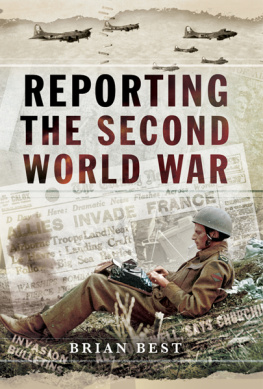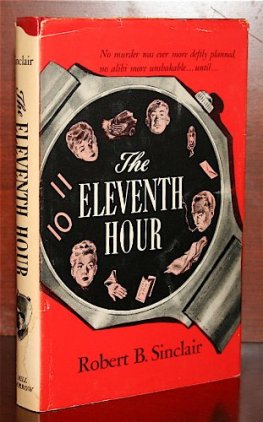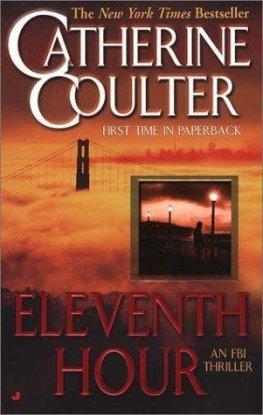Table of Contents
For my grandfathers,
both of whom fought on the Western Front,
and for my grandmother,
whose brothers are still there somewhere.
LIST OF ILLUSTRATIONS
The Germans were within sight of the Eiffel Tower when their final offensive petered out. (Mary Evans Picture Library)
German gunner, killed at Villers Devy Dun Sassey on 4 November 1918. (Corbis)
Captain Charles de Gaulle. (Bridgeman Art Library/Archives de Gaulle, Paris)
Harry Truman. (Getty Images)
Sergeant-Major Flora Sandes, a British clergymans daughter serving in the Serbian infantry. (TopFoto)
Herbert Sulzbach. (Weidenfeld Archive)
After a scratch supper at Homblires, the German Armistice delegates returned to their car for the journey to Compigne. (Imperial War Museum)
Matthias Erzberger, leader of the German delegation. (Getty Images)
Prince Max von Baden, Chancellor of Germany for only a few weeks. (AKG-Images, London)
General Wilhelm Grner. (Getty Images)
Philipp Scheidemann at the window of the Chancellery in Berlin. (AKG-Images, London)
View from the top of Berlins Brandenburg Gate during the revolution. (AKG-Images, London)
Princess Blcher. (Weidenfeld Archive)
Soldiers on the Brandenburg Gate. (AKG-Images, London)
Corporal Teilhard de Chardin. (Editions Grasset)
Ludwig Wittgenstein. (Getty Images)
2nd Lieutenant George Coles. (Imperial War Museum)
The Kaiser waits for his train to arrive at Eisden, 10 November. (AKG-Images, London)
Lady Susan Townley, wife of the British ambassador at the Hague. (National Portrait Gallery, London)
Marshal Foch signs the Armistice for France soon after 5 a.m. on 11 November. (TopFoto)
The Canadians relax in Monss main square on Armistice morning. (National Archives of Canada)
The Irish Guards at Maubeuge, five minutes before the Armistice. (Getty Images)
Patricia Carver. (Private collection)
Crowds at Buckingham Palace on Armistice morning. (Getty Images)
Crowds at the White House, 1918. (Getty Images)
Newspaperman Roy Howard. (Getty Images/Time & Life Pictures)
Australians in Sydneys Martin Place on Armistice day. (Australian War Memorial)
American Troops dance through the streets of Paris on Armistice day. (Bridgeman Art Library/Archives Larrousse, Paris)
Henry Gunther, officially the last US soldier to die in the war. (Baltimore Sun)
US air ace Eddie Rickenbacker. (Getty Images)
Bogart Rogers. (Weidenfeld Archive)
Ernest Hemingway in uniform. (Weidenfeld Archive)
Agatha Christie. (Bridgeman Art Library: Illustrated London News)
John Maynard Keynes. (Bridgeman Art Library)
Mahatma Gandhi. (Getty Images)
T. E. Lawrence. (Imperial War Museum)
Marlene Dietrich and Erich Maria Remarque. (Getty Images)
Paris showgirl Mistinguett and Maurice Chevalier. (Bridgeman Art Library/Bibliotheque de LArsenal, Paris)
Andr Maurois. (Getty Images)
Chancellor Friedrich Ebert Greets undefeated troops at the Brandenburg Gate on 10 December. (AKG-Images, London)
ACKNOWLEDGEMENTS
Thanks to the following for permission to quote from documents at the Imperial War Museum: Mary Coles (G.T. Coles 03/58/1), Jeanne Davies (W.W. Johnstone Wilson 97/5/1), M.R.D. Foot (R.C. Foot 86/57/1), Cynthia Ford (H.M. Wilson 04/1/1), D.A. Hamilton (A.S. Hamilton 93/31/1), estate of H.W. House (H.W. House 88/56/1), P.M. McGrigor (A.M. McGrigor P399), Diana Stockford (H.C. Rees 77/179/1), Estelle Wells (Ernest Cooper P121), Miss E. Wells (Olive Wells 91/5/1) and to Richard Davies of the Brotherton Library, University of Leeds for permission to quote from S.C. Marriotts letter of 11 November 1918 in the Liddle Collection.
Thanks also to the following for permission to quote from published works: Juliet Nicolson (Peacemaking by Harold Nicolson, Constable, 1933), University Press of Kansas (A Yankee Ace in the RAF by Bogart Rogers, UPK, 1996), Random House (The Question of Things Happening: Letters of Virginia Woolf, Hogarth Press, 1976) Oxford University Press (Journey from Obscurity by Harold Owen, OUP, 1965) and Decie Denholm (Behind the Lines by Ethel Cooper, Collins, 1982).
Other copyright holders have been difficult to track down. They are welcome to get in touch if they wish.
Thanks too to Jane Wilson, Robin Boyd, the staff of the Documents Department at the Imperial War Museum and Pamela Clark of the Royal Archives.
The biggest news in the history of newspapers,
perhaps in the history of humanity. A scrap of news that
two thousand million people - the whole world
awaited breathlessly. News that would mean to tens of
millions that their sons, husbands or sweethearts would
come home alive and unmaimed... News that had never
before and could never again mean so much to so many
people. The Armistice!
Webb Miller, United Press
The greatest day in history.
London Daily Express
CHAPTER ONE
Monday, 4 November 1918
The New Zealanders were on a roll. For weeks they had been chasing the Germans across France, forcing them steadily back towards the frontier with Belgium. Ahead of them now lay the ancient citadel of Le Quesnoy, straddling the road to the frontier beyond. One final push and the German army would be out of France altogether.
Le Quesnoy stood on high ground amid rolling countryside. It had been a fortress for eight hundred years, its thick walls long familiar to the English, who had had their first taste of cannon fire there in 1346. The walls had later been strengthened by Marshal Vauban, who had remodelled the ramparts in the seventeenth century to withstand a long siege. They stood sixty feet high now, topped with gun emplacements, heavily defended by the German garrison of the town.
The New Zealanders came out of the mist in the early morning of Monday, 4 November 1918. They bypassed the town first, clearing the surrounding fields of Germans before turning their attention to the citadel. It was an easy target with modern artillery. The New Zealanders could have reduced it to rubble in no time if they had wished. But there were five thousand French civilians in Le Quesnoy, as well as the German garrison. The New Zealanders didnt want to use artillery if they could avoid it.
Some prisoners were sent in instead, to explain to the garrison that their position was hopeless. The Germans didnt doubt it, but their garrison commander was reluctant to surrender without a fight. When the prisoners failed to return, a message was dropped by aeroplane urging the garrison commander to capitulate, promising that his men would be honourably treated if they raised the white flag. When the commander still refused to parley, the New Zealanders decided to capture Le Quesnoy the old-fashioned way, by storming the bastion and climbing the walls with scaling ladders.
They cleared the walls of the enemy first, putting down a heavy barrage on the outer rampart while the storming party advanced behind a smokescreen. After some fierce fighting, the New Zealanders breached the outer walls and forced a way across to the moat. German troops threw stick grenades down on them as they circled the inner rampart, looking for a way up. The only feasible route was via a bridge across the moat. They estimated that a thirty-foot ladder on the bridge would just reach the top of the inner wall surrounding the town.

















